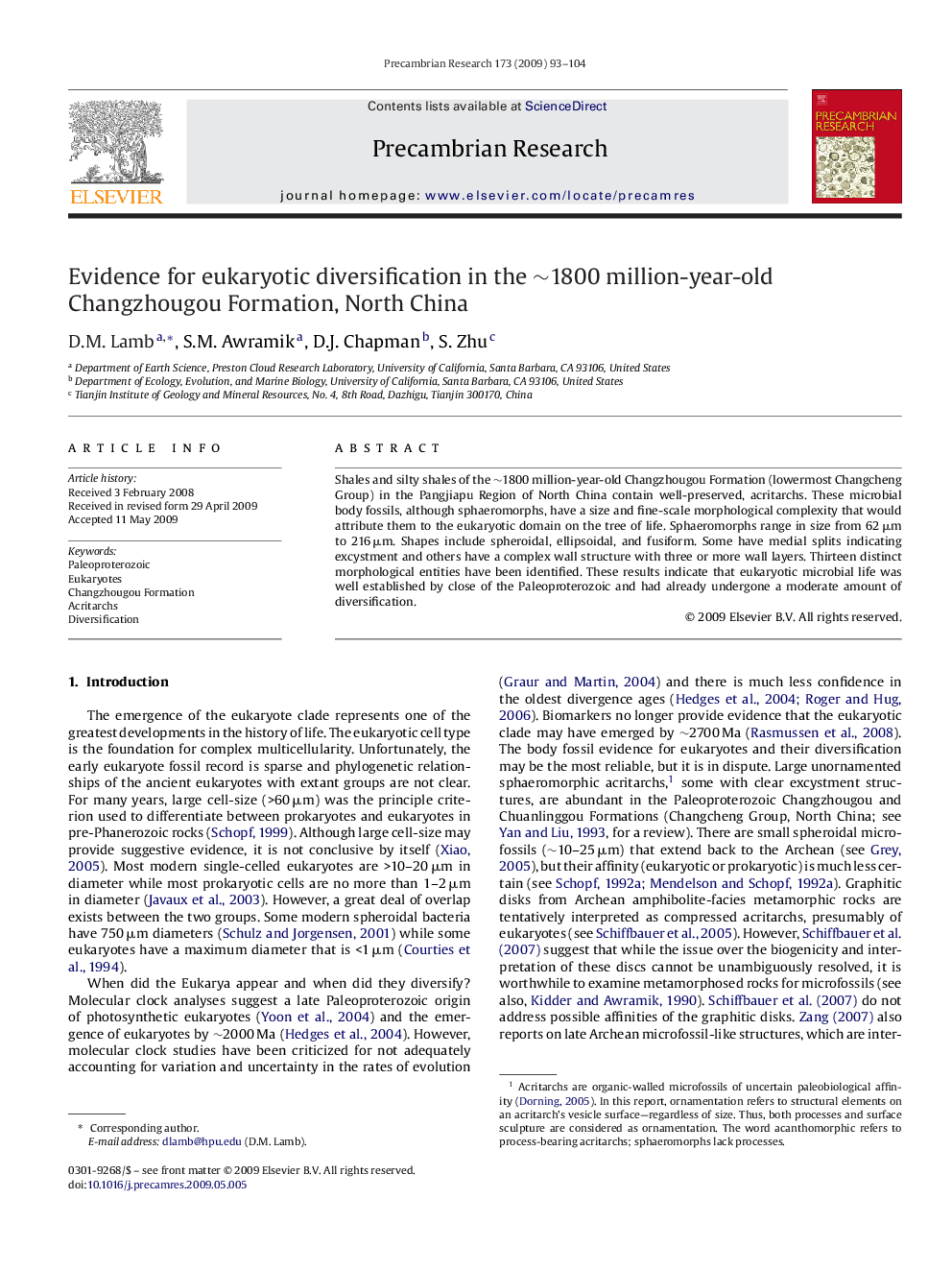| Article ID | Journal | Published Year | Pages | File Type |
|---|---|---|---|---|
| 4724027 | Precambrian Research | 2009 | 12 Pages |
Shales and silty shales of the ∼1800 million-year-old Changzhougou Formation (lowermost Changcheng Group) in the Pangjiapu Region of North China contain well-preserved, acritarchs. These microbial body fossils, although sphaeromorphs, have a size and fine-scale morphological complexity that would attribute them to the eukaryotic domain on the tree of life. Sphaeromorphs range in size from 62 μm to 216 μm. Shapes include spheroidal, ellipsoidal, and fusiform. Some have medial splits indicating excystment and others have a complex wall structure with three or more wall layers. Thirteen distinct morphological entities have been identified. These results indicate that eukaryotic microbial life was well established by close of the Paleoproterozoic and had already undergone a moderate amount of diversification.
